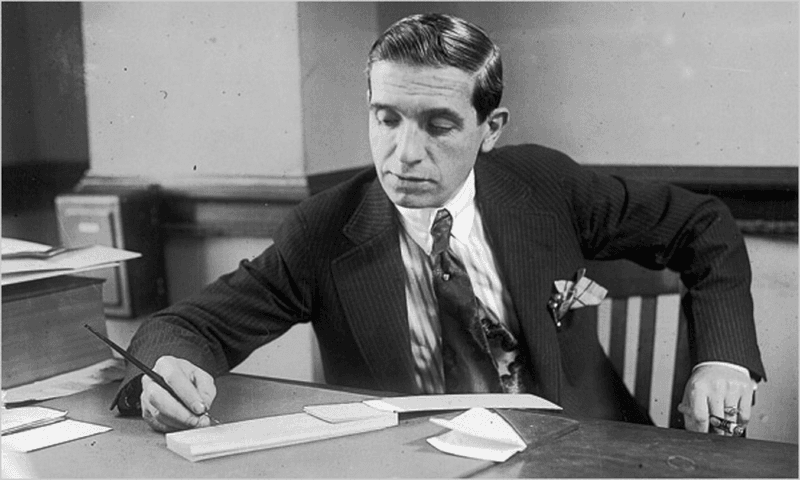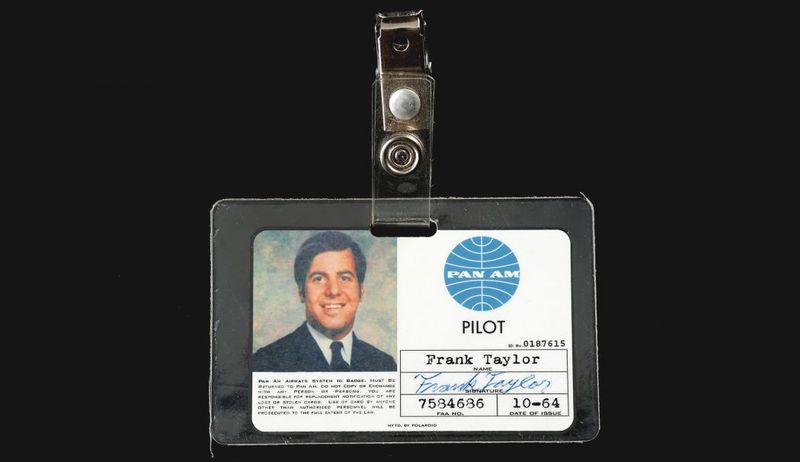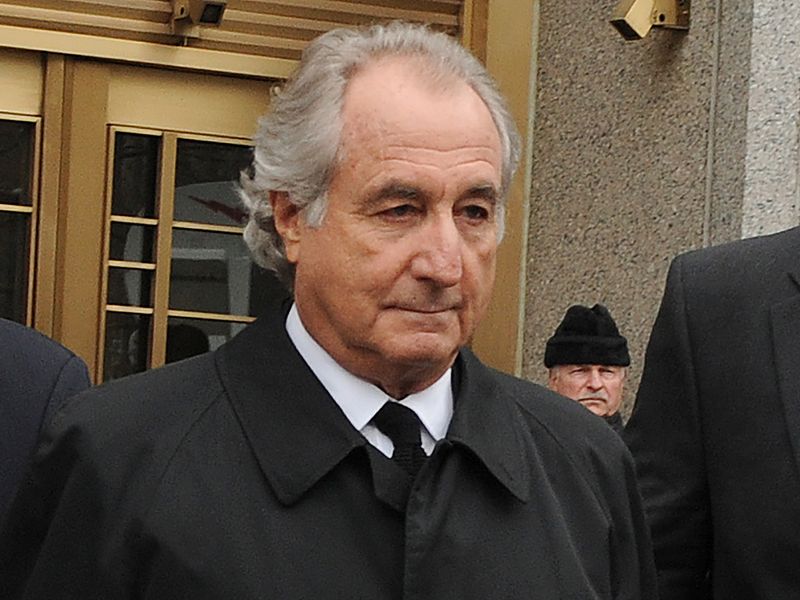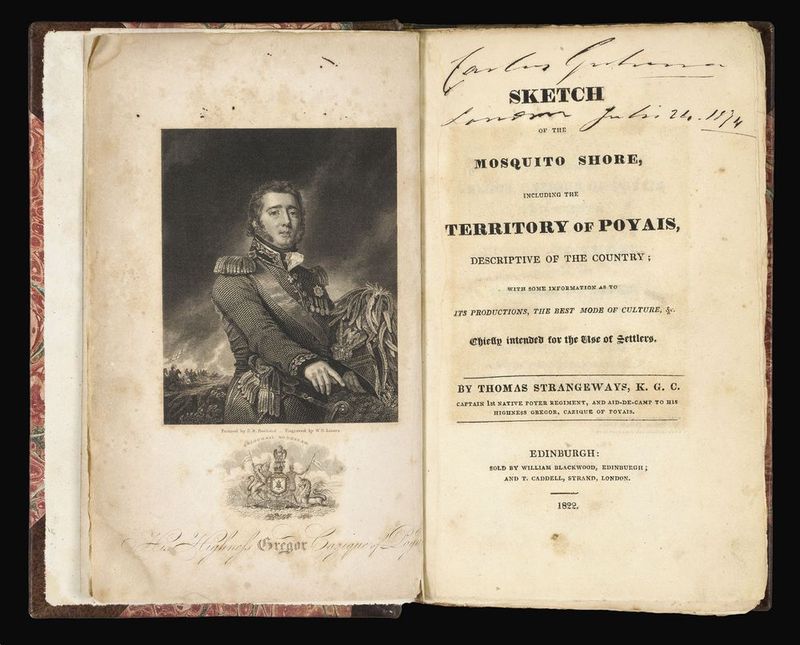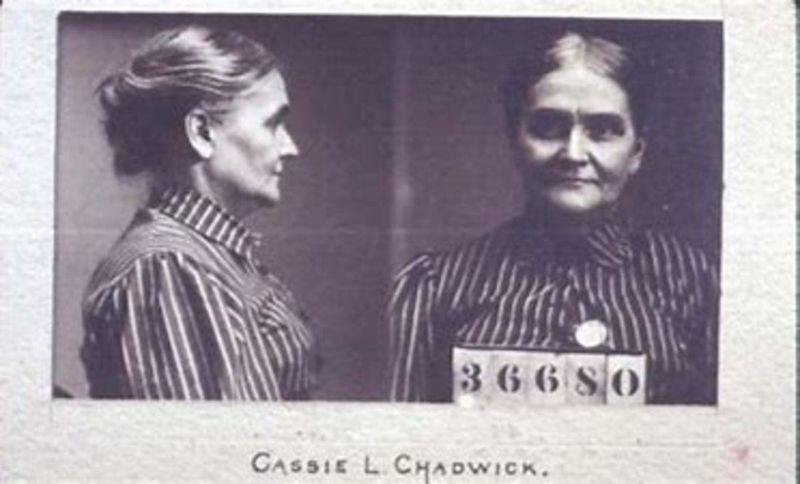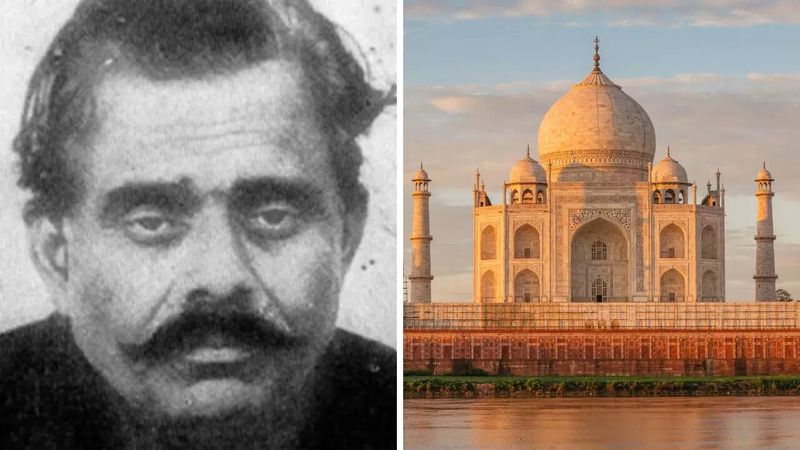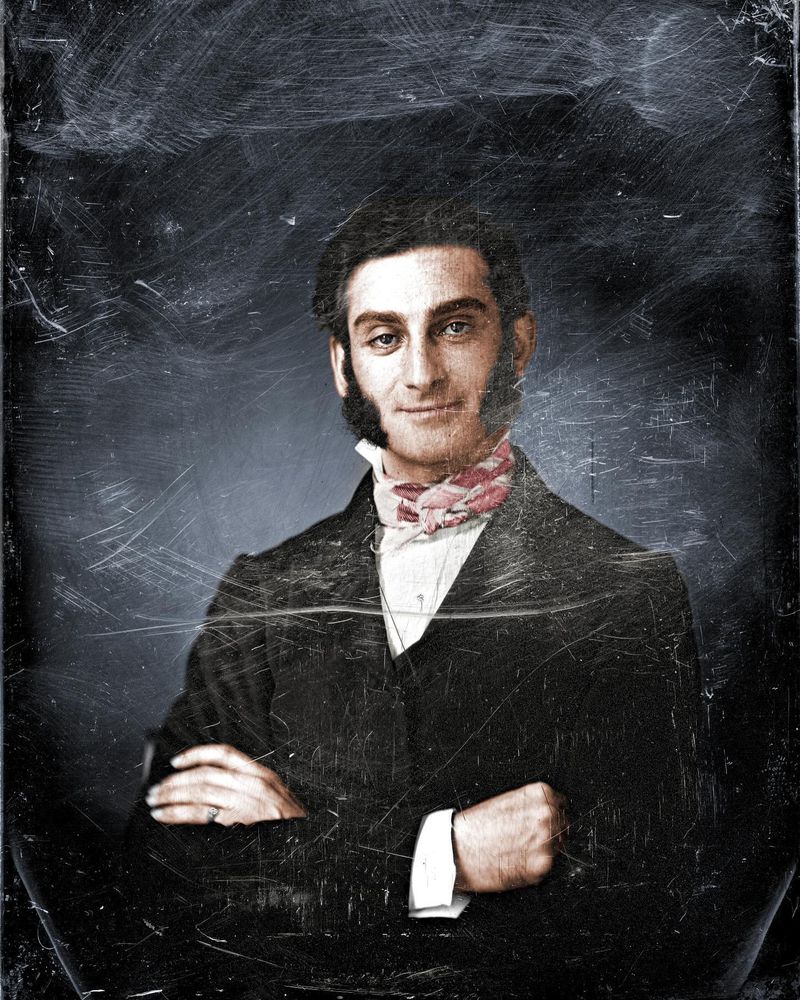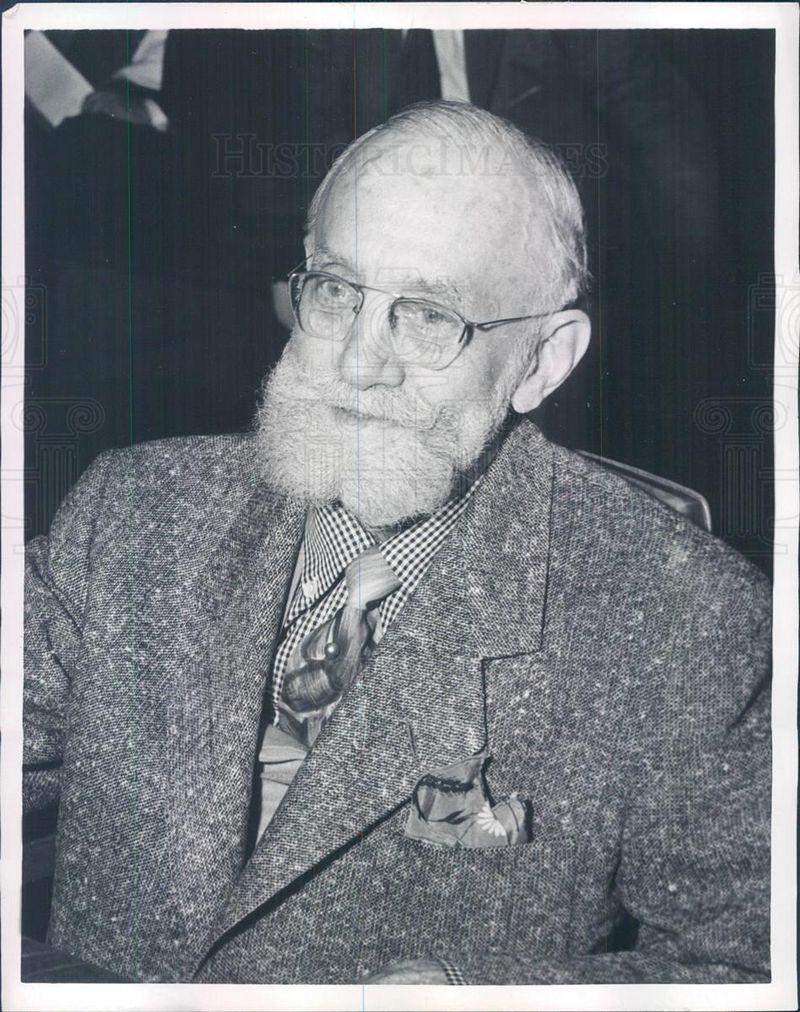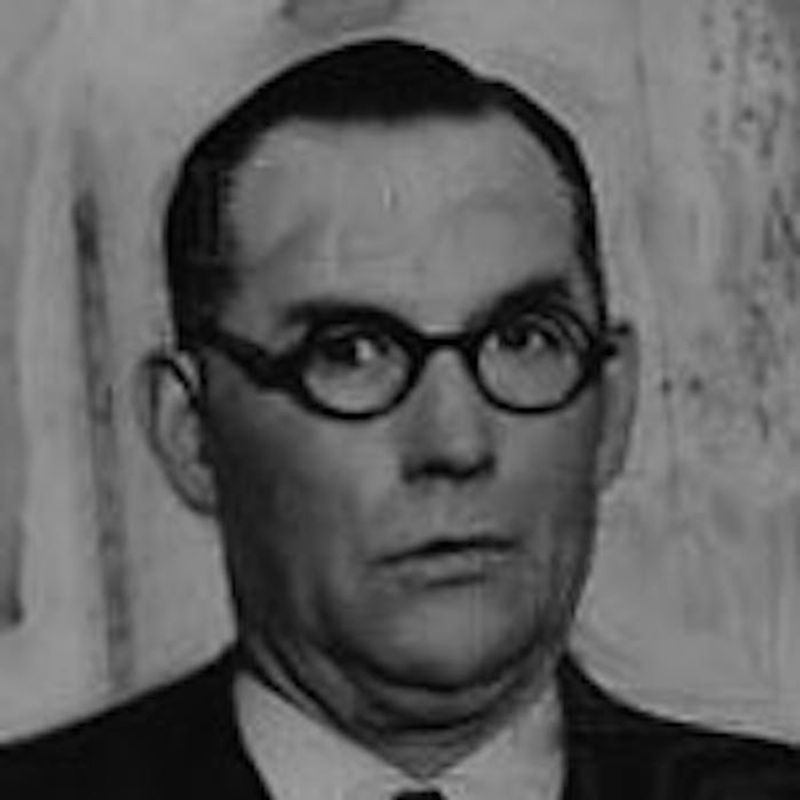Throughout history, certain individuals have elevated deceit to an art form. These masters of trickery have conned millions, impersonated important figures, and pulled off schemes so audacious they seem almost unbelievable. Their stories reveal both the darkest corners of human greed and the remarkable creativity of criminal minds. Let’s explore the most notorious con artists who changed the course of history with their elaborate deceptions.
1. Charles Ponzi: Namesake of Financial Fraud
Small in stature but enormous in financial infamy, the Italian immigrant arrived in America with $2.50 in his pocket and a dream. By 1920, he was raking in millions through his postal coupon scheme – promising 50% returns in just 45 days. Ponzi never actually invested the money. Instead, he paid early investors with funds from newer victims, creating the illusion of legitimate profits. At his peak, he collected $1 million per week from eager Bostonians. When his house of cards collapsed, thousands lost their life savings. Though others had run similar scams before, Ponzi executed it so spectacularly that his name became synonymous with the fraudulent investment technique.
2. Frank Abagnale Jr.: The Teenage Impostor
Before his 21st birthday, this boyish fraudster had already impersonated an airline pilot, doctor, lawyer, and college professor. His extraordinary talent for forgery allowed him to cash $2.5 million in fraudulent checks across 26 countries during the 1960s. Abagnale’s most daring con involved posing as a Pan Am pilot. He didn’t just forge an ID card – he obtained a real uniform, learned industry jargon, and manipulated the airline’s policies to deadhead on over 250 flights worldwide. Captured at 21 and imprisoned, Abagnale later transformed his criminal expertise into a legitimate career. He’s spent over four decades as an FBI consultant, developing anti-fraud measures for the very institutions he once victimized.
3. Victor Lustig: The Man Who Sold the Eiffel Tower
A charming Czech con man with an extraordinary talent for misdirection. In 1925, Lustig posed as a government official and convinced scrap metal dealers that France’s iconic landmark was being dismantled, selling it not once but twice! His audacity knew no bounds – he even managed to swindle the notorious gangster Al Capone. With fluency in five languages and a repertoire of 47 aliases, Lustig operated across continents until his capture in 1935. His famous “Ten Commandments for Con Men” became an unofficial guide for swindlers worldwide, including the timeless advice: “Be a patient listener, it is this, not fast talking, that gets a con man his coups.”
4. Bernie Madoff: Wall Street’s Greatest Betrayer
Respected NASDAQ chairman by day, operator of history’s largest Ponzi scheme by night. For nearly two decades, Madoff convinced the financial elite that his consistent 10-12% annual returns were legitimate, amassing a client list of celebrities, charities, and billionaires. The 2008 financial crisis exposed his $64.8 billion fraud when investors suddenly needed cash. His own sons reported him to authorities after he confessed the truth – there was no investment strategy, just an elaborate shell game. Madoff’s betrayal devastated thousands, including lifelong friends and Holocaust survivors. Sentenced to 150 years in prison, he died behind bars in 2021, maintaining that banks and hedge funds were “complicit” in his deception.
5. Anna Sorokin: The Fake German Heiress
Born in Russia and raised in Germany, this ordinary middle-class daughter transformed herself into “Anna Delvey,” fictitious German heiress with a $60 million trust fund. Between 2013 and 2017, she infiltrated New York’s social elite, leaving luxury hotels, restaurants, and even private jets unpaid. Sorokin’s elaborate performance included flashy designer clothes, generous cash tips, and technical financial jargon. She nearly secured a $22 million bank loan for an exclusive arts club before her web of lies unraveled. Convicted of grand larceny in 2019, Sorokin served two years in prison but emerged to find herself a cultural phenomenon. Netflix paid $320,000 for her story rights, prompting New York to enact the “Son of Sam” law preventing criminals from profiting from their notoriety.
6. Gregor MacGregor: The Prince of Made-Up Land
A Scottish adventurer who invented an entire country! In 1820, MacGregor returned to London claiming to be “Cazique” (prince) of Poyais, a fertile paradise in Central America with rich soil, gold-filled rivers, and eager natives awaiting European settlers. MacGregor published guidebooks, designed a flag, created currency, and sold land rights to eager investors. Hundreds of Scottish settlers sailed for this promised Eden, only to discover an uninhabitable jungle. Nearly two-thirds perished from disease and starvation. Astonishingly, when survivors returned with horror stories, MacGregor simply fled to France and repeated the scam! His audacious fiction represents one of history’s first elaborate investment frauds, netting millions in today’s currency.
7. Ferdinand Waldo Demara: The Great Impostor
Known as “The Great Impostor,” Demara assumed at least 10 professional identities without any formal training. His most audacious deception occurred aboard a Canadian warship during the Korean War, where he posed as a surgeon despite zero medical education. Remarkably, Demara successfully performed complex surgeries on wounded soldiers using only a medical textbook he studied the night before. His patients survived, and Korean newspapers celebrated the “miracle doctor” – eventually exposing his true identity. Demara’s extraordinary memory and confidence allowed him to also impersonate a monk, prison warden, civil engineer, and teacher. When asked why he committed his frauds, he simply replied, “Rascality, pure rascality.”
8. Elizabeth Holmes: Silicon Valley’s Blood Fraudster
A Stanford dropout who became America’s youngest self-made female billionaire – on paper. Holmes captivated investors with her vision of revolutionizing healthcare through Theranos, a company claiming to perform hundreds of blood tests from just a finger prick. Her carefully crafted image included a Steve Jobs-inspired black turtleneck, an artificially deepened voice, and rehearsed phrases about changing the world. Holmes secured $945 million in funding and a $9 billion valuation despite her technology never actually working. Wall Street Journal reporting in 2015 revealed that Theranos secretly used traditional blood testing machines while faking demonstrations. Holmes was convicted of fraud in 2022 and sentenced to 11 years in federal prison – a spectacular fall for Silicon Valley’s one-time wunderkind.
9. George C. Parker: The Man Who Sold New York
The original landmark swindler operated in early 1900s New York, targeting fresh-off-the-boat immigrants with limited English. His specialty? Selling public monuments he didn’t own, including the Brooklyn Bridge, Statue of Liberty, and Madison Square Garden. Parker’s elaborate cons included fake offices, forged documentation, and official-looking deeds. His Brooklyn Bridge scam was so successful that police frequently had to remove confused “owners” attempting to erect toll booths on the span! Arrested multiple times, Parker finally received a life sentence in Sing Sing prison in 1928. His audacious schemes birthed the famous saying, “If you believe that, I have a bridge to sell you” – a permanent linguistic tribute to America’s most brazen real estate fraudster.
10. Cassie Chadwick: Carnegie’s Fake Daughter
Born Elizabeth Bigley in Canada, this master manipulator transformed herself into Cassie Chadwick, illegitimate daughter of steel magnate Andrew Carnegie. Her elaborate ruse included “accidentally” dropping a $2 million promissory note signed by Carnegie in front of a banker. Cleveland’s financial institutions fell over themselves to loan money to Carnegie’s supposed heir. She borrowed millions against her “inheritance,” living extravagantly in a mansion filled with priceless art and jewels. Her scheme collapsed when a banker finally approached Carnegie, who confirmed he had no daughter. Chadwick died in prison in 1907, but not before establishing herself as America’s first female financial fraudster to operate on such a grand scale.
11. Natwarlal: The Man Who Sold India’s Monuments
India’s legendary con artist, born Mithilesh Kumar Srivastava, pulled off the unthinkable – repeatedly “selling” national treasures including the Taj Mahal, Red Fort, and even the Indian President’s residence! His mastery of forgery enabled him to create convincing documentation for these outlandish transactions. Natwarlal’s criminal career spanned over 50 years with over 100 aliases and disguises. He specialized in impersonating government officials and escaped from police custody an astonishing 10 times, once while being transported to prison at age 84! Despite 113 convictions and sentences totaling 113 years, he spent little time behind bars. His death remains as mysterious as his life – reports claim he died in 2009, but his body disappeared while being transported to his hometown.
12. Lou Pearlman: The Boy Band Swindler
The mastermind behind *NSYNC and Backstreet Boys lived a double life as both music mogul and massive fraudster. While his bands dominated charts in the 1990s, Pearlman operated a parallel $300 million Ponzi scheme through Trans Continental Airlines – a company that existed mostly on paper. For two decades, he convinced banks and individuals to invest in employee investment programs and retirement plans for his phantom airline empire. The scheme collapsed in 2006 when regulators discovered his empire was built on falsified documents. Pearlman fled to Indonesia but was captured living under an alias. The beloved music producer died in prison in 2016, leaving behind both a revolutionary pop music legacy and thousands of devastated investors.
13. William Thompson: The Original Confidence Man
Meet the swindler who literally gave us the term “con man.” Operating in 1840s New York, Thompson’s method was simple yet revolutionary – he approached well-dressed strangers, chatted amiably, then asked, “Have you confidence in me to trust me with your watch until tomorrow?” Remarkably, many victims handed over valuable timepieces to this well-spoken stranger. Thompson’s innovation wasn’t the theft itself but the psychological manipulation that preceded it – building false trust through social engineering. When finally arrested in 1849, newspapers dubbed him the “Confidence Man,” coining a term that would define generations of swindlers. Thompson’s legacy endures in both criminal psychology and literature, inspiring Herman Melville’s novel “The Confidence-Man.”
14. The Con Queen of Hollywood: Phantom Producer
One of the 21st century’s most bizarre scams targeted Hollywood’s working class. For nearly a decade, an unknown impersonator posed as powerful female executives like Kathleen Kennedy (Lucasfilm) and Amy Pascal (Sony), offering career-making opportunities in Indonesia. Victims spent thousands on travel expenses and “filming permits,” only to discover no job existed. The scammer displayed uncanny knowledge of industry details and mimicked executives’ voices perfectly during hours-long phone calls. In 2020, authorities arrested Hargobind Tahilramani, a 41-year-old Indonesian man living in the UK, as the suspected mastermind. Investigators believe hundreds fell victim to this elaborate scheme, which combined identity theft, social engineering, and deep industry knowledge into a uniquely modern deception.
15. Joseph Weil: The Yellow Kid
Nicknamed for his shock of blond hair, Weil operated in early 20th century Chicago with unprecedented sophistication. His signature “big store” cons involved creating entire fake businesses – including a stock exchange and bank – staffed with accomplices to convince marks they’d discovered insider trading opportunities. Weil’s operations featured meticulous attention to detail, from rented office spaces filled with busy “employees” to elaborately staged scenarios where victims would “accidentally” witness secret financial transactions. His Drake Hotel auction scam alone netted $25,000 from victims who paid for nonexistent furniture. Despite multiple arrests, Weil boasted he swindled over $8 million during his 40-year career. He later published his autobiography, declaring, “The desire to get something for nothing has been very costly to many people who have dealt with me.”
16. James Hogue: The Fake Princeton Student
A 31-year-old high school dropout who successfully infiltrated Princeton University by creating an extraordinary fictional identity. Hogue claimed to be “Alexi Santana,” a self-educated ranch hand who read philosophy while tending sheep in Utah – a story so compelling that Princeton admitted him with a $40,000 scholarship. For two years, Hogue excelled academically and joined the prestigious track team before a former classmate recognized him. Investigation revealed his true identity and multiple previous scams, including posing as a 16-year-old high school student at age 26. After serving time for fraud, Hogue couldn’t stop conning – he was later caught posing as a Stanford University biologist and stealing from luxury homes in Aspen. His remarkable story inspired the documentary “Con Man” and remains a cautionary tale about identity verification.
17. Maria Duval: The Psychic Mail Fraud Queen
For three decades, this mysterious French clairvoyant extracted over $200 million from vulnerable people through personalized letters promising wealth, health, and happiness. Recipients worldwide received seemingly customized messages claiming Duval had experienced visions about their future. Each letter offered spiritual assistance – for a price. The operation processed 56,000 payments monthly at its peak, primarily targeting elderly and desperate individuals with promises of lottery numbers or communication with deceased loved ones. A CNN investigation revealed that Duval may have initially been a real person whose identity was purchased and exploited by sophisticated criminal networks. The scam operated across 33 countries before postal authorities finally shut it down in 2014, making it one of history’s most profitable mail fraud operations.
18. Oscar Hartzell: The Drake Fortune Swindler
An Iowa farmer who convinced thousands of Midwesterners they could claim part of Sir Francis Drake’s estate – supposedly worth billions but “wrongfully held” by the British government. Hartzell claimed to be the legal representative of Drake’s rightful heir, collecting “legal fees” to recover the fortune. His genius lay in creating a community of believers who recruited others. Between 1915 and 1933, approximately 70,000-100,000 Americans invested in his scheme, with many continuing to believe even after his fraud conviction! From prison, Hartzell maintained the Drake fortune was real, convincing followers his imprisonment was a British conspiracy. Some supporters continued sending money to his cause for decades after his death in 1943, demonstrating how powerful belief can override evidence in successful confidence schemes.
19. Anthony Gignac: The Fake Saudi Prince
Born in Colombia and raised in Michigan, Gignac transformed himself into “Prince Khalid bin Al-Saud,” complete with diplomatic license plates, fake security detail, and a Miami penthouse. His extraordinary commitment included never eating pork in public despite loving bacon cheeseburgers! For three decades, Gignac convinced investors, celebrities, and real estate developers he was Saudi royalty. He secured luxury cars, jewelry, and millions in investments while displaying comically obvious errors – including ordering pork during business meetings (forbidden in Islam). His downfall came while attempting to purchase a $440 million Miami hotel. A suspicious developer’s background check revealed Gignac’s 11 prior fraud convictions. Sentenced to 18 years in 2019, his Instagram account “princedubai_07” remains as a digital museum of his lavish fraudulent lifestyle.
20. David Hampton: The Six Degrees Impersonator
A masterful social engineer who convinced Manhattan’s elite he was “David Poitier” – son of actor Sidney Poitier – after being denied entry to Studio 54. Hampton crafted an irresistible story: he was a Harvard student mugged after meeting Melanie Griffith, desperately needing temporary shelter. Wealthy New Yorkers competed to host this charming celebrity offspring, providing money, clothes, and connections. Hampton’s performance included detailed stories about Hollywood and references to his father’s films that seemed convincingly intimate. His scheme collapsed when real-world connections exposed contradictions in his story. Hampton’s remarkable deception inspired the award-winning play and film “Six Degrees of Separation.” He later demanded payment from the productions, claiming ownership of his fraudulent life story.
21. Eduardo de Valfierno: The Mona Lisa Mastermind
The alleged mastermind behind history’s most famous art heist never actually stole anything himself. According to compelling accounts, Valfierno commissioned master forger Yves Chaudron to create six perfect Mona Lisa copies before hiring Vincenzo Peruggia to steal the original from the Louvre in 1911. While the theft made global headlines, Valfierno wasn’t interested in the original painting. His brilliant scheme involved selling each forgery to separate collectors for enormous sums, each buyer believing they were purchasing the stolen original that would need to remain hidden. Though some historians question whether Valfierno actually existed, the audacity of the scheme represents the perfect con – creating both supply and demand through manipulation, with victims who could never report being duped without incriminating themselves.

